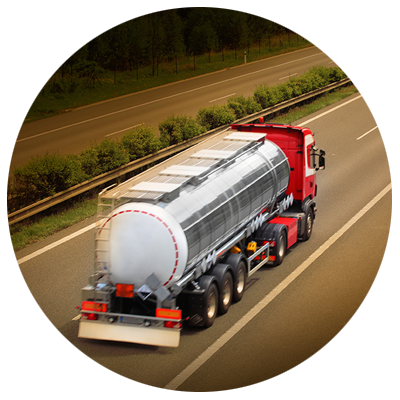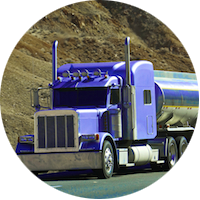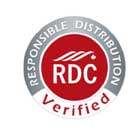Best Practices, Chemical Transportation, Hazmat Transportation
Safety Horror Story Stems from Poorly Loaded Flatbed
This article is going to read like the “Darwin Awards”. For those unfamiliar, the Darwin Awards “go to those who’s less-than-stellar plans that “seemed like a good idea at the time” commemorate the improvement of the human species by honoring those who improve our gene pool by removing themselves from it. Named in honor of Charles Darwin.” Let me also say, that safety is the utmost concern for me as a manager and it is not the intent of this article to make light of safety issues. However, this story will illustrate how things can go horribly wrong without proper supervision and planning. Before I begin, no one was seriously hurt resulting from these events.
Let me first set the scene. It’s a normal summer day at a chemical company’s tank farm. They happen to be moving a large number of tanks to an alternate facility. The tanks are large and are 10 feet in diameter. The plan it to load them by crane on their side onto a flatbed for shipping. This is where the action starts.
Picture the flatbed parked in the yard. The yard slopes gently across the width of the trailer. If you’re a golfer, you would consider it a side hill lie. Now, the cast of characters. There is a crane operator, his signal man (also called “a swamper”), the truck driver, and a chase car driver, as the load was oversized.
The crane operator picks the tank up and lowers it onto the truck without incident. Now, everyone becomes confused as to how to secure the tank on the flatbed so the crane operator can release the tank. The driver suggests putting 4×4 lumber under the tank and then strapping it down. Seems like a good plan. The driver puts the 4×4 plank under the tank on the uphill side of the trailer and proceeds to throw straps over the top. The straps seem to get tangled on top of the tank. The chase car driver, standing on the other side of the trailer, down hill from the driver decides that it would be a good idea to lean a ladder against the tank and climb up on top to retrieve the straps. OK, just so we’re clear, the block is on the uphill side of the trailer. The chase car driver is downhill and leans a ladder up against the side of the tank and climbs up on it. Keep in mind, there is no imminent danger as the crane still has a hold of the tank.
The crane operator is uphill from the trailer and sees that a brace is in place and that there is a man on top of a ladder leaned against the tank. He assumes all is good and releases the tank. Immediately, the tank starts to roll down hill and the ladder becomes a catapult sending the chase car driver sailing through the air. Thankfully, the man was catapulted far enough away that the tank, which rolled off the trailer and was barrelling down hill didn’t roll over top of him. The chase car driver was rushed to hospital with a bruised pelvis (and ego).
Now the blaming starts. The driver blames the crane operator. The crane operator blames the driver. There’s hospital bills for the chase car driver and the damaged tank to be paid for.
At the end of the day, who’s responsible? In my opinion, the site supervisor who wasn’t there to supervise the loading was responsible. Loading and unloading of flatbed by crane can be a dangerous endeavor. Especially, since this occurrence was out of the ordinary for the site. Here are some suggestions for making sure your flatbed loads get loaded safely.
- If loading an oversize flatbed by crane is out of the ordinary for your site, then have a safety meeting before hand to understand how the task is going to be accomplished.
- The crane operator is clearly responsible for the load while it is in the air and until it is safely put to rest. Make sure the crane operator knows whom he is taking instruction from.
- Make sure the load is supervised by someone from your site. This work is being done on your site and you will be held responsible is someone is injured.
- The load should be blocked, braced and strapped securely before the crane operator releases the load.
- Make sure all parties have appropriate Workmen’s Compensation Insurance (WSIB, WCB, etc).
There is a happy ending to this story. While I was investigating the aftermath of this event. The chase car driver told me that when he got to the hospital he was diagnosed with a potentially fatal illness for which he needed immediate treatment. Had he not gone to the hospital because of this incident, there is a chance he could have died. He considered the accident a blessing.
Chemical and HAZMAT Trucks
About Author
Comments are closed












